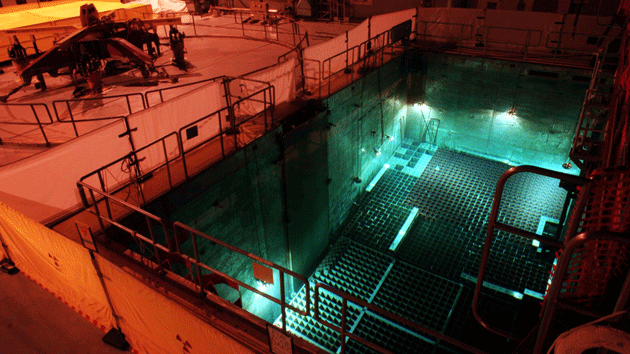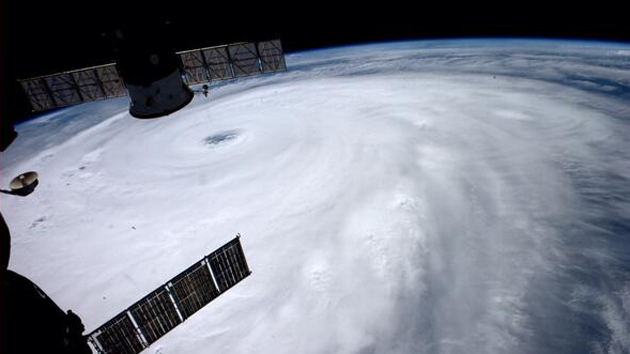The internet lit up this morning. The world was about to change dramatically for the better, all because of a major technological breakthrough: clean, abundant energy from nuclear fusion. “Lockheed Martin’s new fusion reactor can change humanity forever,” claims the headline in Gizmodo. A “potentially paradigm-shifting development in global energy,” says Aviation Week. Lockheed’s own promotional video for the Compact Fusion Reactor claims the company is “restarting the atomic age.”
Here are the key bits from the Reuters report Wednesday morning to bring you up to speed:
Tom McGuire, who heads the project, said he and a small team had been working on fusion energy at Lockheed’s secretive Skunk Works for about four years, but were now going public to find potential partners in industry and government for their work.
Initial work demonstrated the feasibility of building a 100-megawatt reactor measuring seven feet by 10 feet, which could fit on the back of a large truck, and is about 10 times smaller than current reactors, McGuire told reporters.
In a statement, the company, the Pentagon’s largest supplier, said it would build and test a compact fusion reactor in less than a year, and build a prototype in five years.
Lockheed Martin, one of the biggest military supply companies in the United States, says the technology could be deployed in as little as ten years. The company promoted the news with fanfare:
Being small is a big deal. See how compact fusion #energy will power the future: http://t.co/NCNREOYrv8 #fusionenergy pic.twitter.com/Ei9fQuG1PK
— Lockheed Martin (@LockheedMartin) October 15, 2014
Rosi Reed, an assistant professor of physics at Wayne State University, and a researcher at the Large Hadron Collider, run by European Organization for Nuclear Research, said that the most impressive part of the breakthrough was the increase in energy output—ten times greater than that of previous reactors. “So this means that this reactor can be a lot smaller,” she said.
Of course, Reed said, while it’s exciting news, the promise is all theoretical at this stage. Should we believe the hype?
First, let’s start with the basics. What is fusion? Stars—like our very own sun—create power in their cores using nuclear fusion. The conditions in the core of a star are very extreme—high pressures, temperatures, and densities. But “when we want to reproduce those conditions on Earth, we are at a great disadvantage,” says Dr. Swadesh M. Mahajan, a thermonuclear plasma physicist at the University of Texas. That’s because we don’t have the same immense mass as the sun. Our planet is far too small to produce the kind of gravity necessary for large scale fusion. The challenge, essentially, is putting the sun in a box. That box, in theory, is packed full of charged particles, moving at great speeds, constrained by a strong magnetic field that enhances the probability that the particles slam into each other. With enough pressure, the particles stop resisting, and finally fuse, let off an amazing amount of energy.
The problem, says Reed, is that usually it takes just as much energy to power that controlling magnetic field as the power you get from fusion, hence the current size of the reactors. Lockheed claims to be able to harness that energy at a more efficient rate, so it can then make the reactors smaller.
But there are a lot of reasons to be skeptical about Lockheed’s announcement, says Mahajan, who, with a team of scientists, designed a new way to reduce waste from nuclear reactors in 2009. First, fusion reactors right now are pretty big*. Mahajan says making them smaller is extremely hard to do—you need a very confined space, with loads of material at extremely high densities, and then you need to get that power out of the reactor to be used. “So it’s both the physics and the engineering which are extremely, extremely daunting,” he said. “We know of no materials that would be able to handle anywhere near that amount of heat.”
Mahajan called Lockheed’s announcement “poppycock.” He said, “Getting net energy from fusion is such a goddamn difficult undertaking,” he said. “We’re all aware that there’s always a finite chance of some breakthrough which is beyond the powers of imagination.” But if there was a genuine breakthrough, he said, “we’d be screaming from the treetops.”
Correction: An earlier version of this article wrongly said fusion reactors power some aircraft carriers and submarines. They are in fact “fission” reactors.












